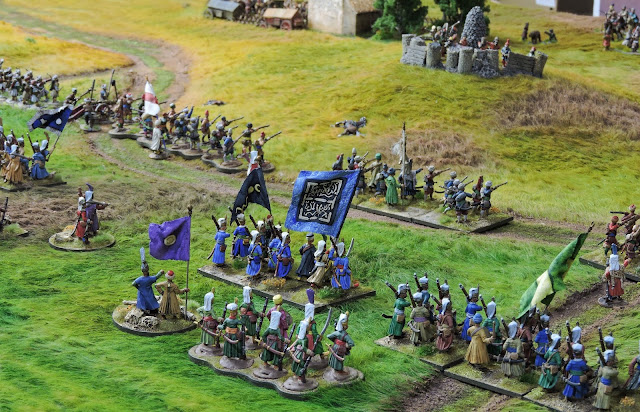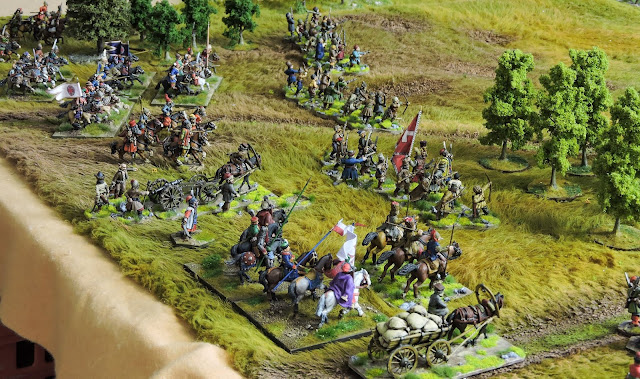1677.....
The Ottoman Empire, allied with Crimean Tatars is pushing north on the west bank of the great Dnieper river into the Ukranian territories. The first line of defence is offered by Cossacks on both sides of the river.
A strong Turkish force composed mainly of infantry has been given the objective of capturing a small Cossack settlement near an ancient Patzinak burial site known locally as Skull Mound. The Cossacks have fortified the village and built temporary defensive works atop the skull hill. A large combined force of infantry and cavalry is rushing to block the advance of the Turks and their Tatar allies........
 |
| The Ottoman force prepares to attack Skull Mound |
Ottoman Force
Commander: Skilful.
2 squadrons of Timariot Sipahis. Drilled with lance.
1 squadron of Tatars. Raw with bow
3 field guns - 1 with Master gunner.
1 unit of 12 Archers - Drilled
3 units of Sekban infantry. Drilled with matchlock muskets.
4 units of Janissaries. Veteran with flintlock muskets.
2 units of Guard Janissaries (8 & 12 models) Guard with flintlock muskets.
 |
| Cossacks rush to deploy across a wide front and hold back the numerous enemy |
Cossack Force
Commander: Competent.
6 units of Cossack infantry. Raw with matchlock muskets.
9 squadrons of Cossack cavalry. Drilled with lance.
2 squadrons of Hetman's Guard. Veteran with lance.
2 light guns.
 |
| Anchor of the Cossack right wing - a fortified village bristling with guns |
The scenario
The Ottoman objective was to take both the Skull Mound and the village. The Cossack force was to be driven from the battlefield. The Cossack objective was to repulse the invader.
We used the new GNW supplement rules for Eastern Wars and played a 21 turn game in around five hours.
 |
| The lengthy assault on Skull Mound begins with a hail of fire from irregular units |
Next.....
The game was a nail biting, last man standing duel to the death which could have gone either way in almost every turn after T6. How we made it last for 21 turns you can find out in the second part of this blog series.

